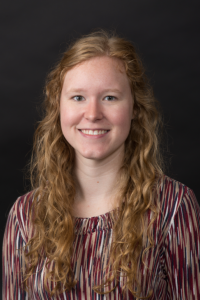1. Please tell us a little about yourself?
I am originally from the Chicago area and then taught middle and high school math in Houston, Texas. Most recently, I am coming from the University of Illinois at Urbana-Champaign. I moved here with my husband, son, and two dogs. We are excited to be here in Arkansas where we can regularly take out our kayaks or bikes and go explore. I enjoy hiking, baking, reading, and crafting.
2. Tell us about the courses that you would like to teach at UCA?
Currently I am teaching courses in elementary math content for future elementary school teachers as well as a graduate course in our M.A. program. In the coming semesters, I will also be teaching courses in the STEMTeach program with our secondary math preservice teachers. I enjoy teaching courses to future and current teachers about what it means for students to engage in mathematics and how we as teachers can facilitate that learning.
3. Tell us a little about your research?
Grounded in my experience as a teacher, my research is concerned with how math teachers notice and engage with students’ mathematical thinking. Specifically, I am interested in how teachers notice students’ mathematical thinking and their subsequent use of that thinking in their instructional choices. This research extends to a general interest in teacher education through both university-based teacher preparation programs and practicing teachers. I work with supporting preservice teachers to hone their ability to notice students’ mathematical thinking as well as in professional development settings where I collaborate with practicing teachers to support noticing of our students’ thinking in classrooms.
4. Can you give us an example of an application of this research?
As the facilitator in classrooms where students are actively engaging with mathematics, it is challenging to understand and act on students’ thinking in-the-moment. It takes being able to recognize the math concepts that students are using as well as interpreting what they might be thinking through their work or conversations. My research has identified ways to support elementary preservice teachers in increasing their ability to notice students’ thinking by using video clips to “practice” noticing along with increasing their content knowledge.
5. What is your favorite part of your transition to UCA?
While there are many things that I have enjoyed about being at UCA, I think I have liked working with the students the most. I have found the students to be engaged, self-motivated, and a joy to work with. I enjoy being a part of preservice teachers’ journeys as they realize that they can work towards becoming exceptional math teachers.
6. What is the most challenging part of your transition to UCA?
With local education often being quite state-dependent, it has been a challenge to move from out of state and quickly get up to speed with the math education landscape here in Arkansas. Along with that, familiarizing myself with the various programs, licenses, and such has been an adjustment.





